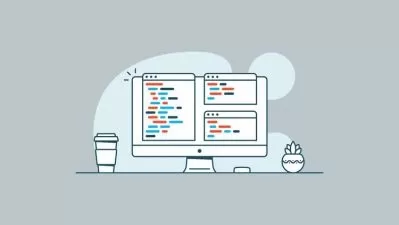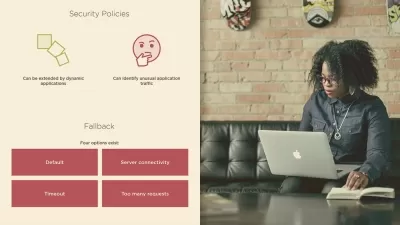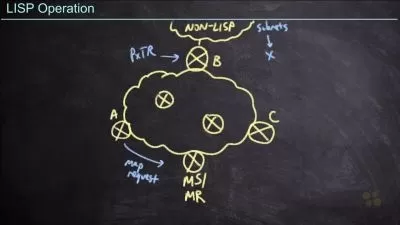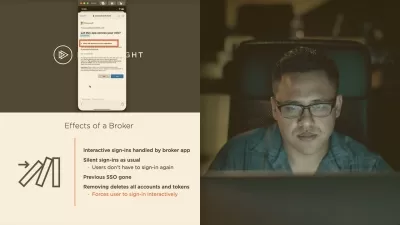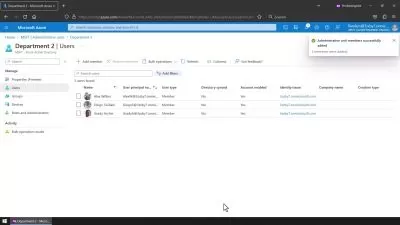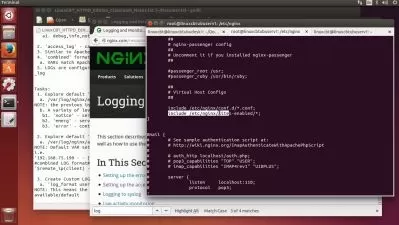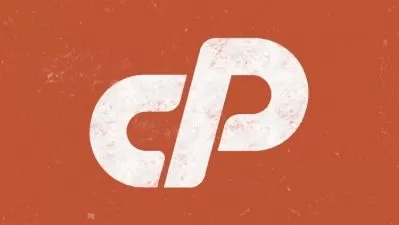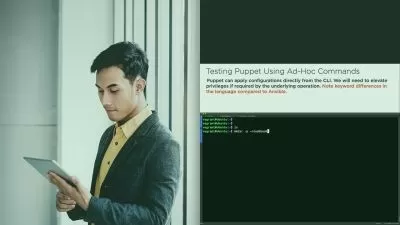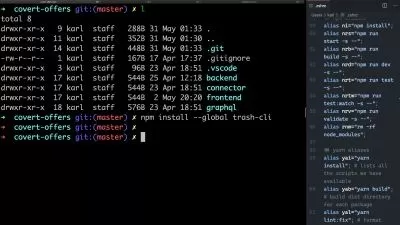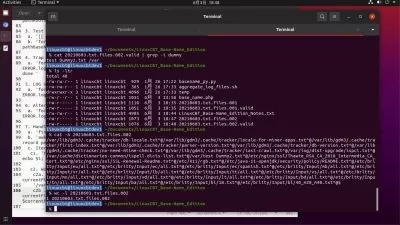CompTIA Linux Plus Complete Guide
Vijay Kumar
19:13:30
Description
Mastering Linux Administration and Security
What You'll Learn?
- Linux System Administration: Gain a comprehensive understanding of Linux system administration tasks, including user and group management, file permissions etc
- Networking in Linux: Learn how to configure network interfaces, manage network connections, troubleshoot networking issues, and implement basic network services
- Acquire the skills to implement Linux security measures, manage user and group permissions, secure network services, configure firewalls, and cryptography
- Develop the ability to diagnose and troubleshoot common Linux system issues, perform system backups and restores, manage system logs
Who is this for?
What You Need to Know?
More details
DescriptionThe CompTIA Linux+ course is a comprehensive training program designed to provide you with the essential skills and knowledge needed to become a proficient Linux administrator. This course is tailored for individuals who are new to Linux or seeking to enhance their existing Linux expertise. It covers the core concepts, tools, and techniques required to effectively manage Linux systems in enterprise environments.
Throughout the course, you will gain a deep understanding of Linux architecture, installation, package management, file systems, shells, scripting, and networking. You will learn how to perform essential administrative tasks such as user and group management, file permissions, process management, and system monitoring. Additionally, you will explore advanced topics including virtualization, cloud computing, troubleshooting, and security.
Practical hands-on exercises and lab sessions will be an integral part of the course, allowing you to apply your knowledge in real-world scenarios. You will have the opportunity to work with industry-standard tools and technologies, gaining valuable experience in configuring and managing Linux systems.
By the end of the course, you will have acquired the skills needed to successfully pass the CompTIA Linux+ certification exam. This globally recognized certification validates your expertise in Linux administration and enhances your credibility in the field of information technology.
Whether you are a beginner taking your first steps in the Linux world or an experienced IT professional seeking to expand your skill set, this course provides a solid foundation and empowers you to confidently administer Linux systems in a variety of organizational settings.
Embark on this comprehensive journey into Linux administration and unlock exciting career opportunities in the ever-growing field of open-source technology.
Who this course is for:
- This course is designed for individuals who are interested in becoming Linux administrators or advancing their Linux administration skills. It is suitable for beginners who are new to Linux as well as experienced IT professionals looking to expand their knowledge and obtain the CompTIA Linux+ certification.
The CompTIA Linux+ course is a comprehensive training program designed to provide you with the essential skills and knowledge needed to become a proficient Linux administrator. This course is tailored for individuals who are new to Linux or seeking to enhance their existing Linux expertise. It covers the core concepts, tools, and techniques required to effectively manage Linux systems in enterprise environments.
Throughout the course, you will gain a deep understanding of Linux architecture, installation, package management, file systems, shells, scripting, and networking. You will learn how to perform essential administrative tasks such as user and group management, file permissions, process management, and system monitoring. Additionally, you will explore advanced topics including virtualization, cloud computing, troubleshooting, and security.
Practical hands-on exercises and lab sessions will be an integral part of the course, allowing you to apply your knowledge in real-world scenarios. You will have the opportunity to work with industry-standard tools and technologies, gaining valuable experience in configuring and managing Linux systems.
By the end of the course, you will have acquired the skills needed to successfully pass the CompTIA Linux+ certification exam. This globally recognized certification validates your expertise in Linux administration and enhances your credibility in the field of information technology.
Whether you are a beginner taking your first steps in the Linux world or an experienced IT professional seeking to expand your skill set, this course provides a solid foundation and empowers you to confidently administer Linux systems in a variety of organizational settings.
Embark on this comprehensive journey into Linux administration and unlock exciting career opportunities in the ever-growing field of open-source technology.
Who this course is for:
- This course is designed for individuals who are interested in becoming Linux administrators or advancing their Linux administration skills. It is suitable for beginners who are new to Linux as well as experienced IT professionals looking to expand their knowledge and obtain the CompTIA Linux+ certification.
User Reviews
Rating
Vijay Kumar
Instructor's Courses
Udemy
View courses Udemy- language english
- Training sessions 135
- duration 19:13:30
- Release Date 2023/08/21






